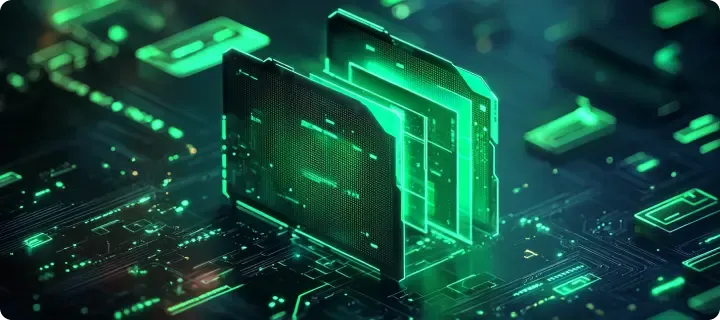TRON (TRX) is a blockchain platform created to assist digital creators. It offers creators more manipulate over their work through eliminating middlemen, which include massive platforms that take a large reduce of earnings. TRON makes use of its own cryptocurrency, called TRX, which powers transactions across its device. One of its excellent functions is the ability to earn TRX staking rewards with the aid of collaborating in the network. These rewards assist customers gain extra earnings whilst assisting TRON’s operations.
TRON became launched in 2017 as part of the Ethereum blockchain but moved to its very own device in 2018. This shift made TRON quicker and extra lower priced for customers. TRON can procedure 2,000 transactions in line with 2d, in comparison to Ethereum’s 15-30. The platform also helps smart contracts and decentralized apps (dApps) that enable secure and automated transactions. TRON’s recognition on creators and pace has helped it become one of the leading blockchains inside the global.
The origins of TRON (TRX)
TRON became founded with the aid of Justin Sun, a younger entrepreneur who desired to change how virtual content is shared. Justin studied at Peking University and the University of Pennsylvania. He saw that creators frequently lose earnings due to excessive platform charges, so he designed TRON to give creators direct get admission to to their audiences. This way, they could earn cash without delay without paying large commissions. TRON additionally rewards users via TRX staking rewards, growing an ecosystem in which each person blessings.

In 2018, TRON acquired BitTorrent, a well-known record-sharing platform. This circulate made TRON even more effective by way of combining blockchain generation with document sharing. Now, TRON allows human beings share documents, circulate films, and run apps, all even as incomes TRX staking rewards. Justin’s imaginative and prescient changed into to make TRON a hub for creators and builders, and the platform continues to develop beneath his leadership.
How does TRON (TRX) work?
TRON operates using a three-layer architecture designed for pace, scalability, and security. These layers encompass the garage layer, the center layer, and the software layer, every gambling a key position in the machine’s functionality.
The storage layer securely stores blockchain information, transaction history, and clever agreement statistics. It uses superior encryption to maintain information secure and on hand, supporting decentralized applications (dApps) and platforms like BitTorrent. The core layer strategies blockchain operations, along with transaction validation and the execution of smart contracts. Developers can use programming languages like Solidity or Java, and their packages run on the TRON Virtual Machine (TVM), designed for performance and compatibility.
The software layer allows customers and builders to interact with TRON’s environment. Developers build apps and gear, while users depend on TRX for payments, transfers, and rewards. With the potential to process 2,000 transactions per 2nd, TRON guarantees smooth performance for dApps, even underneath heavy call for.
TRON makes use of a Delegated Proof of Stake (dPoS) consensus mechanism, which replaces energy-intensive mining with a voting system. Users freeze their TRX to gain voting power and select 27 exquisite representatives who manage the network. Participants earn TRX staking rewards, incentivizing their involvement even as maintaining the blockchain secure and efficient.
TRON’s ecosystem additionally helps stablecoins like USDT-TRON, which are broadly used for payments due to their reliability and velocity. The network’s 0-rate coverage for TRX transactions makes it an attractive preference for organizations and people in search of price-powerful answers for frequent payments. This mixture of affordability and scalability has made TRON a preferred platform for builders growing blockchain-based applications.
One of TRON’s most large strengths is its flexibility to assist diverse use cases. Beyond gaming and content material sharing, the platform is an increasing number of used in economic services and company solutions. Its infrastructure is built to deal with the developing call for for decentralized finance (DeFi) applications and worldwide digital transactions. This adaptability guarantees that TRON stays a applicable and forward-wondering blockchain inside the hastily evolving crypto landscape.
What makes TRON (TRX) different from Ethereum?
While each TRON and Ethereum are used for smart contracts and dApps, TRON gives significant blessings. One of the largest differences is transaction speed. TRON can deal with 2,000 transactions in line with second, at the same time as Ethereum techniques most effective 15-30. This makes TRON much quicker, especially for apps that need real-time overall performance.

Another key function is TRON’s low fees. While Ethereum’s gas expenses can be steeply-priced and unpredictable, TRON maintains charges almost zero. This is particularly essential for staking. On TRON, customers who participate in staking now not best save on prices however also earn TRX staking rewards. These rewards make TRON extra attractive for both buyers and builders.
TRON’s consciousness on creators also units it apart. The platform was designed to help artists, musicians, and different creators get paid pretty. By offering rewards and rapid payments, TRON guarantees a higher enjoy for both creators and their audiences.
What are the fees for TRON (TRX) transactions?
One of the pleasant things approximately TRON is its minimal transaction fees. Sending TRX or using the network fees nearly not anything. This makes it best for small payments or apps where users make frequent transactions. For instance, if someone wants to send small tips to a writer, TRON makes it clean without worrying about excessive prices.
Low fees also benefit users who need to earn TRX staking rewards. Unlike other blockchains, wherein prices can lessen your income, TRON’s low fees permit you to preserve greater of what you earn. Whether you’re staking TRX or the usage of dApps, the network’s affordability makes it a famous preference.
How can you earn TRX staking rewards?
Earning TRX staking rewards is one of the simplest ways to make money with TRON. Staking works by using freezing your TRX tokens, which gives you vote casting power in the community. You can use this power to vote for extremely good representatives, who manipulate and steady the blockchain. In go back, you obtain rewards based on the amount of TRX you staked.
Staking is a easy technique. You don’t want any unique system or advanced expertise. All you need is a TRON wallet or an trade that supports staking. The rewards are dispensed often, and the extra TRX you stake, the better your earnings. Staking is likewise green because it doesn’t use a lot electricity. By earning TRX staking rewards, users help steady the network while taking part in passive income.

Many people pick out TRON due to the fact staking is so accessible. It’s a extraordinary manner to aid the blockchain and earn extra cash at the identical time. Whether you’re a beginner or an experienced crypto person, staking on TRON is a reliable choice.
Why is TRON (TRX) vital for creators and agencies?
TRON is designed to assist creators earn greater from their work. Unlike conventional systems that take a large percentage of sales, TRON permits creators to receives a commission immediately via TRX payments. Fans can reward their favored artists without paying greater prices to intermediaries. This gadget additionally supports TRX staking rewards, giving creators and customers extra methods to earn earnings.
Beyond content introduction, TRON is widely used for transactions way to its zero-charge policy for TRX transfers. Many groups have adopted TRON as a payment method, together with well-known names like Travala, SpendCard, and Bitnovo. The network’s low fees and fast processing make it perfect for groups of all sizes. Additionally, Tether has moved its stablecoin to the TRON blockchain beneath the call USDT-TRON, showcasing TRON’s scalability and reliability.
The acquisition of BitTorrent similarly extended TRON’s skills. By combining blockchain era with report-sharing offerings, TRON has created a dynamic atmosphere that helps gaming, payments, and decentralized apps. These functions make TRON an vital device for creators, developers, and organizations alike.